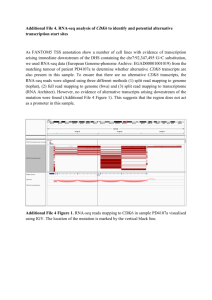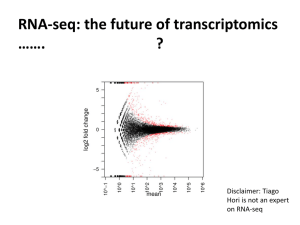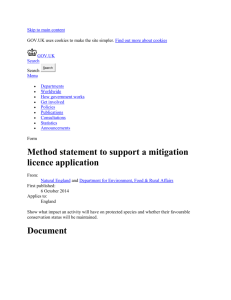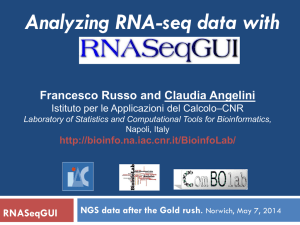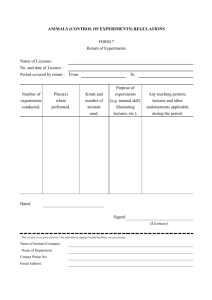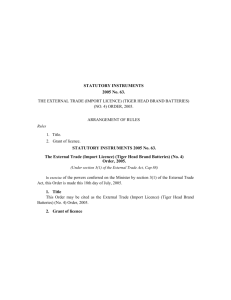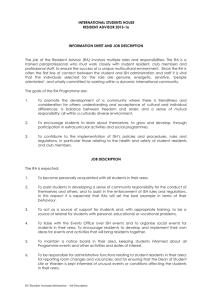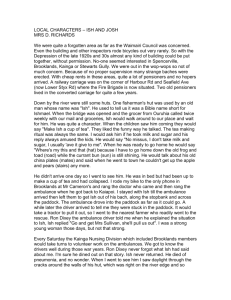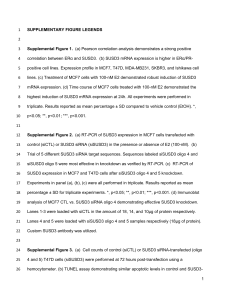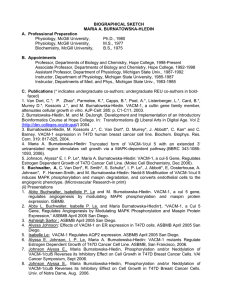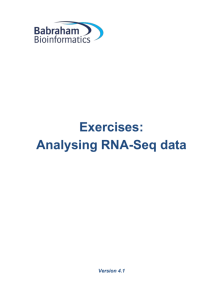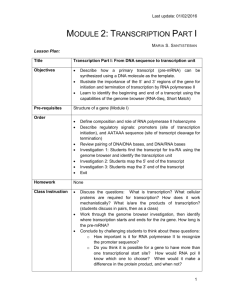Course Exercises - Babraham Bioinformatics
advertisement
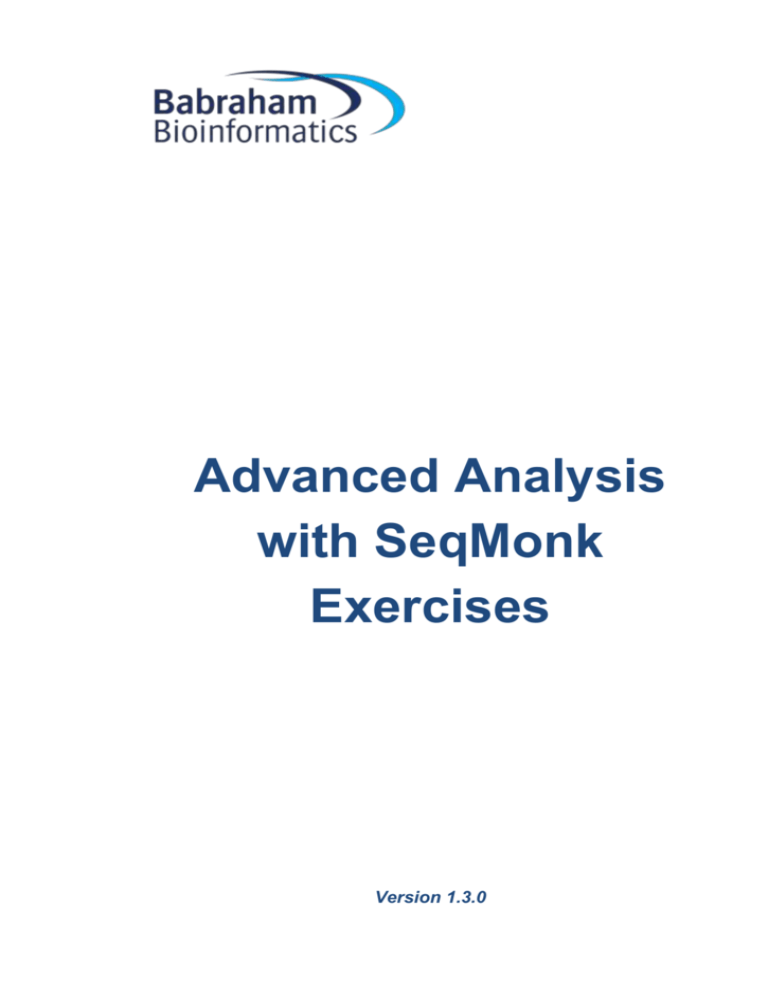
Advanced Analysis with SeqMonk Exercises Version 1.3.0 2 Advanced SeqMonk Course Exercises Licence This manual is © 2013-2014, Simon Andrews. This manual is distributed under the creative commons Attribution-Non-Commercial-Share Alike 2.0 licence. This means that you are free: to copy, distribute, display, and perform the work to make derivative works Under the following conditions: Attribution. You must give the original author credit. Non-Commercial. You may not use this work for commercial purposes. Share Alike. If you alter, transform, or build upon this work, you may distribute the resulting work only under a licence identical to this one. Please note that: For any reuse or distribution, you must make clear to others the licence terms of this work. Any of these conditions can be waived if you get permission from the copyright holder. Nothing in this license impairs or restricts the author's moral rights. Full details of this licence can be found at http://creativecommons.org/licenses/by-nc-sa/2.0/uk/legalcode DataSets The example datasets used as examples in this course are taken from the public sequence repositories. The data used were: 1. The UHR_directional_Tn-RNA-seq sample (GSM800443) from GEO GSE32307. Taken from Gertz J, Varley KE, Davis NS, Baas BJ et al. Transposase mediated construction of RNA-seq libraries. Genome Res 2012 Jan;22(1):134-41. PMID: 22128135 2. All samples from ArrayExpress E-MTAB-822 Transcription profiling by high thoughput sequencing of human cell lines Ishikawa, MCF7 and T47D treated with estrogen, progesterone and their antagonists 3 Advanced SeqMonk Course Exercises Exercise 1: Reimporting and Wiggling Open the directional RNA-Seq project file Select a small region with obvious variation in coverage and construct a wiggle plot over the region Use the smoothing quantitation to smooth out the wiggle plot Use the antisense transcription pipeline to identify novel antisense transcription. Review the results and see if you agree with its predictions. Exercise 2: Custom Tracks and Grouping Open the ‘Large_RNA_Seq.smk’ project file containing 18 RNA-Seq samples Create a custom mRNA track containing only protein coding genes on autosomal chromosomes (exclude X, Y and MT) Do a standard RNA-Seq quantitation using this custom track and merging transcript isoforms Normalise your data as you see fit Do a condition tree to see how to group your samples and create replicate sets Create replicate sets from the Ish, T47D, MCF7-Tam and MCF7 sample groups. You can use a mixture of automatic and manual group creation. Exercise 3: Simulation Select the subset of transcripts which are annotated as being Calmodulin binding proteins (GO:0005546) Use a Monte-Carlo simulation to test whether these show higher than average expression in the T47D sample Exercise 4: Pairwise comparison Use the Intensity Difference filter to find transcripts which are changing between the Ish and T47D groups Create a report sorted by significance and look at the top hits Re-run the intensity difference filter to find changes between any of your replicate sets. Exercise 5: Multi-comparison and clustering Cluster your hits using hierarchical clustering and view the results Try viewing the clustered results as replicate sets and individual replicates Generate lists from clusters connected R>0.7 and draw a summary line graph for these groups Exercise 6: More clustering Find genes whose expression increases steadily from Ish untreated – E2-3h – E2-12h Find genes whose expression decreases steadily from Ish untreated – E2-3h – E2-12h View the two sets of results.
